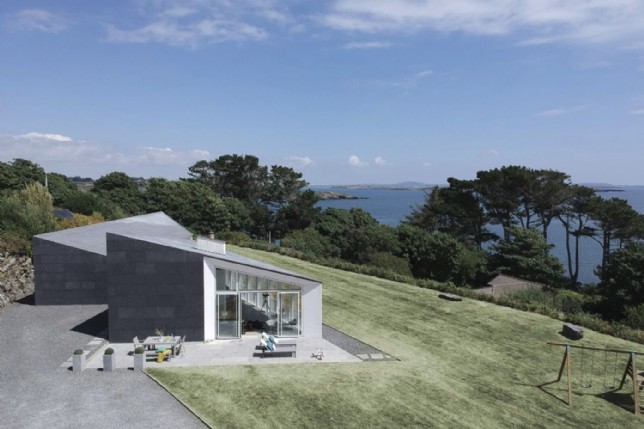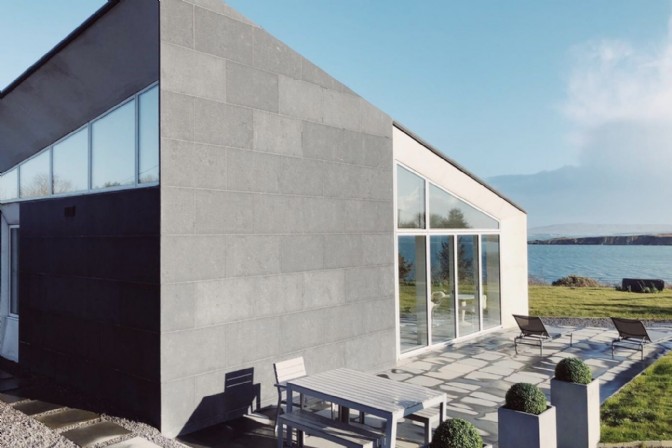As the aircraft grinds to a halt on the warm tarmac of Cork Airport, a rustle runs through the cabin. Commuters throw on suit jackets and reach for their battered leather briefcases. “Thanks a million” says the flight attendant in her soft southern Irish accent, bidding farewell to the faces as they pass. Some she sees regularly, some (like me) are new. It’s the Friday evening flight from Heathrow and passengers make a swift exit out the airport onwards home.
Cork is home to a quarter of a million people, boasting the second largest natural harbour in the world. The city is basking in the wake of a cultural and business renaissance. Waterfront properties gleam, live music spills from busy bars and the food scene is second to none in the British Isles. I’m not headed to the city this time though, I’m on the N71 down to wild West Cork.
The drive to Skyros takes an hour and thirty minutes, the roads wind through sleepy pastel-hued villages backed by undulating green hills. Skyros sits just outside the village of Schull. Leaving the lights of the village behind, the full moon glows over Roaringwater Bay to the left of the coastal road, lined by swaying palms. To the right, a lane branches off to a flat clearing where the imposing piece of architecture awaits.
The house is stunning in its simplicity. The owner grew up in the neighbourhood and realised his dream of building a unique modern home on his childhood playground when he enlisted architect Niall McLaughlin on the project in 2009. Niall’s designs have won many awards including RIAI Best Building in the Landscape and the RIBA Stephen Lawrence Award. Made of poured concrete, Skyros is clad entirely in Irish Kilkenny Limestone, paying homage to the natural landscape. South-facing views stretch over the Atlantic sea past Castle Island, Long Island, Cape Clear, Sherkin and The Three Calves. It’s the perfect marriage of contemporary and coastal, manmade and Mother Nature.
Saturday morning is bright and breezy, the fire flickers away in the living room while the bath fills like a pint of Guinness in the master suite, neatly topped with white velvety bubbles. After a late breakfast swooning over the shimmering waterfront views, it's back on the road. We join the Wild Atlantic Way down to Mizen Head. The route zigzags past jagged peninsulas, island frontiers and deserted white-sand beaches summoning a bracing swim. The breath-taking landscape continues all the way to what feels like the end of the earth at Crookhaven, the most southerly point in Ireland. We stop for sourdough bread and steaming bowls of fish chowder in O’Sullivans Bar – a place where Harrison Ford stopped for a pint during the filming of Star Wars at nearby Brow Head.
Sunday consists of a coastal walk around Schull and, when the heavens opened, a pub crawl around the pint-sized pubs of Hackett’s and O’Regan’s. The town fills with yachty folk in summer months, here for the boat scene and bars, but for now, it’s chatty locals all eager to make a new friend.
Monday morning is a slow one, finishing last night’s game of scrabble and cleaning up leftovers from the pantry. We drive back via the renowned Ring of Kerry, a nonsensical diversion to our dinner spot in Kinsale harbour but worth every mile.
It’s true to say Ireland remains largely undiscovered. Visitors may flock to the hotspots and five-star hotels in summer but the secluded landscapes and hidden gem homes such as Skyros are where the beauty really lies.
Aer Lingus, Ryanair and British Airways operate direct and regular flights between London and Cork with a travel time of around an hour. Car hire from Cork airport is affordable too. Those wanting more of an adventure can voyage across the water by car ferry from Fishguard, allowing room for surfboards and whatever else your road trip might entail. Why not start at Skyros and take the Unique Homestays tour to Lost Cottage in Kerry and Walden Lakehouse in Westmeath?











